Marlan O. Scully
Ghost translation
Sep 29, 2022



Abstract:Artificial intelligence has recently been widely used in computational imaging. The deep neural network (DNN) improves the signal-to-noise ratio of the retrieved images, whose quality is otherwise corrupted due to the low sampling ratio or noisy environments. This work proposes a new computational imaging scheme based on the sequence transduction mechanism with the transformer network. The simulation database assists the network in achieving signal translation ability. The experimental single-pixel detector's signal will be `translated' into a 2D image in an end-to-end manner. High-quality images with no background noise can be retrieved at a sampling ratio as low as 2%. The illumination patterns can be either well-designed speckle patterns for sub-Nyquist imaging or random speckle patterns. Moreover, our method is robust to noise interference. This translation mechanism opens a new direction for DNN-assisted ghost imaging and can be used in various computational imaging scenarios.
Deep-learned speckle pattern and its application to ghost imaging
Dec 28, 2021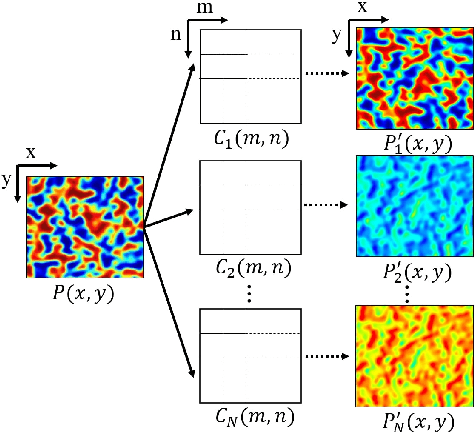
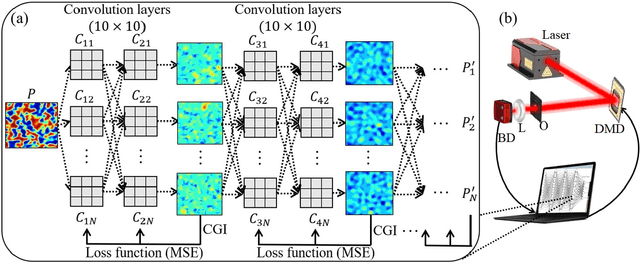
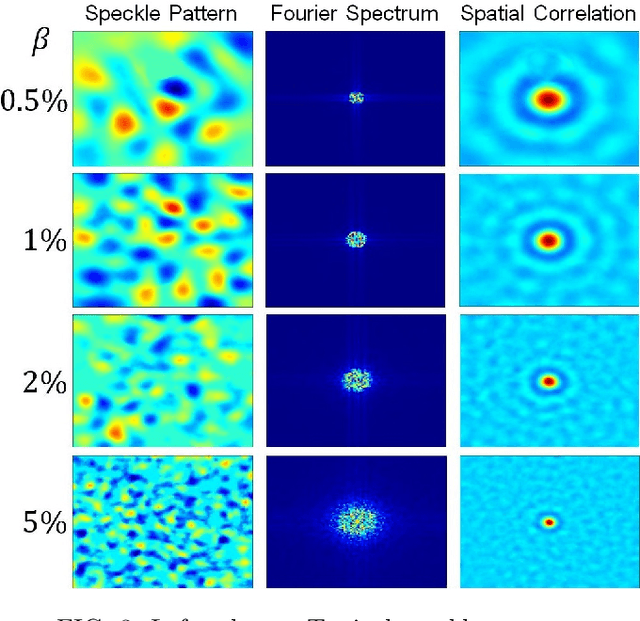
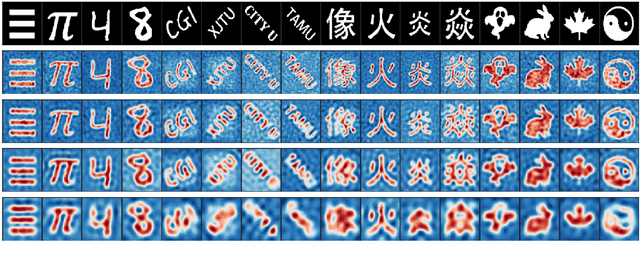
Abstract:In this paper, we present a method for speckle pattern design using deep learning. The speckle patterns possess unique features after experiencing convolutions in Speckle-Net, our well-designed framework for speckle pattern generation. We then apply our method to the computational ghost imaging system. The standard deep learning-assisted ghost imaging methods use the network to recognize the reconstructed objects or imaging algorithms. In contrast, this innovative application optimizes the illuminating speckle patterns via Speckle-Net with specific sampling ratios. Our method, therefore, outperforms the other techniques for ghost imaging, particularly its ability to retrieve high-quality images with extremely low sampling ratios. It opens a new route towards nontrivial speckle generation by referring to a standard loss function on specified objectives with the modified deep neural network. It also has great potential for applications in the fields of dynamic speckle illumination microscopy, structured illumination microscopy, x-ray imaging, photo-acoustic imaging, and optical lattices.
Imaging through scattering media via spatial-temporal encoded pattern illumination
Dec 26, 2021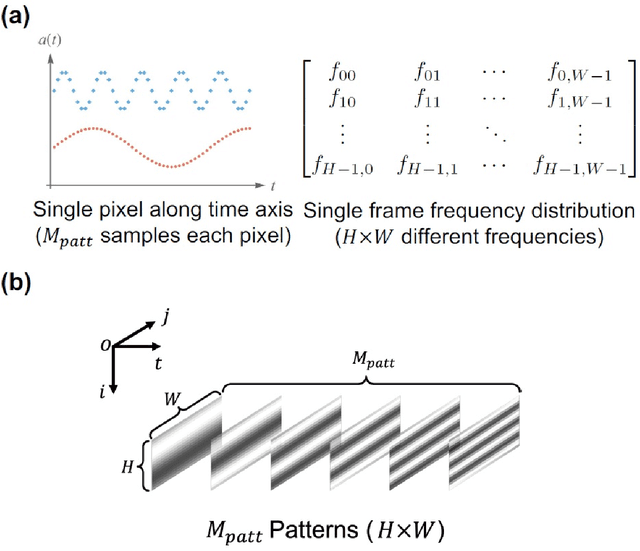
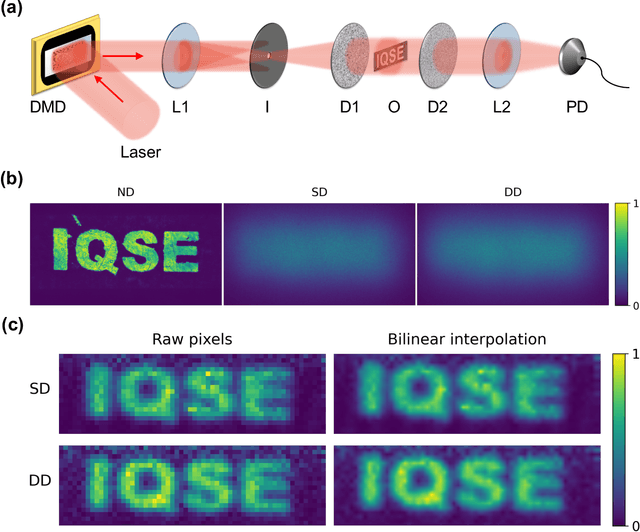
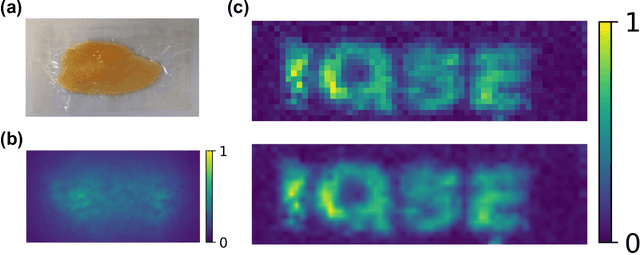
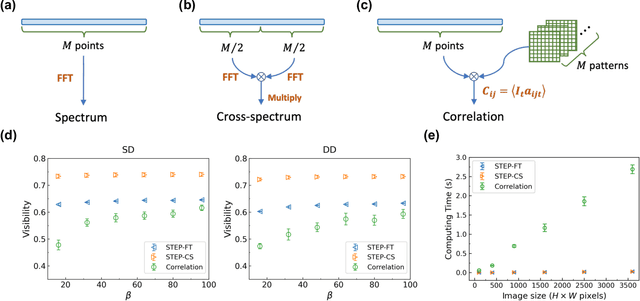
Abstract:Optical imaging through scattering media is a long-standing challenge. Although many approaches have been developed to focus light or image objects through scattering media, they are either invasive, restricted to stationary or slowly-moving media, or require high-resolution cameras and complex algorithms to retrieve the images. Here we introduce a computational imaging technique that can overcome these restrictions by exploiting spatial-temporal encoded patterns (STEP). We present non-invasive imaging through scattering media with a single-pixel photodetector. We show that the method is insensitive to the motions of media. We further demonstrate that our image reconstruction algorithm is much more efficient than correlation-based algorithms for single-pixel imaging, which may allow fast imaging in currently unreachable scenarios.
0.8% Nyquist computational ghost imaging via non-experimental deep learning
Aug 17, 2021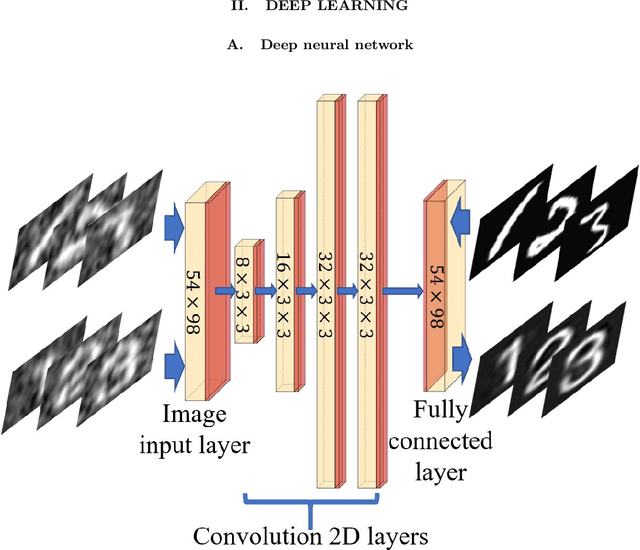
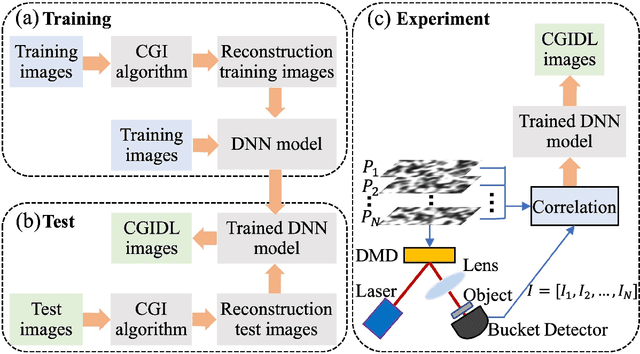
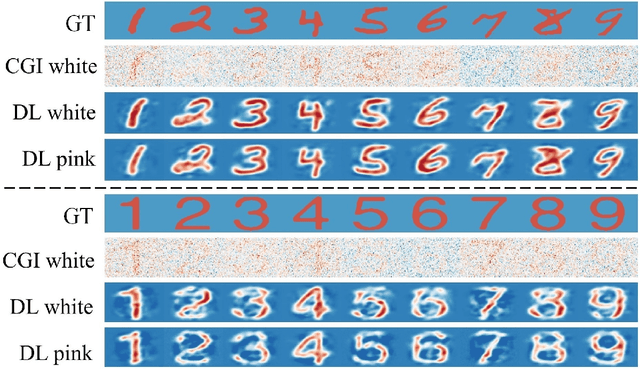
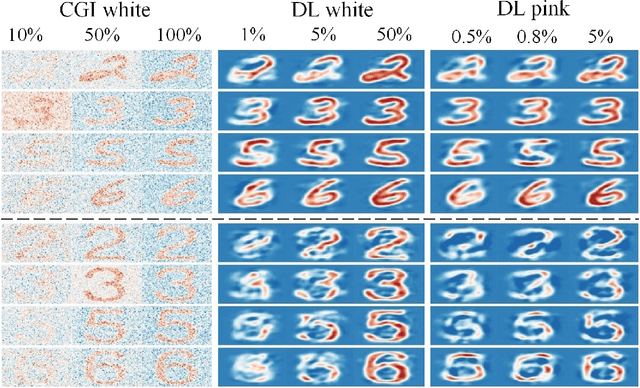
Abstract:We present a framework for computational ghost imaging based on deep learning and customized pink noise speckle patterns. The deep neural network in this work, which can learn the sensing model and enhance image reconstruction quality, is trained merely by simulation. To demonstrate the sub-Nyquist level in our work, the conventional computational ghost imaging results, reconstructed imaging results using white noise and pink noise via deep learning are compared under multiple sampling rates at different noise conditions. We show that the proposed scheme can provide high-quality images with a sampling rate of 0.8% even when the object is outside the training dataset, and it is robust to noisy environments. This method is excellent for various applications, particularly those that require a low sampling rate, fast reconstruction efficiency, or experience strong noise interference.
Superresolving second-order correlation imaging using synthesized colored noise speckles
Feb 11, 2021



Abstract:We present a novel method to synthesize non-trivial speckles that can enable superresolving second-order correlation imaging. The speckles acquire a unique anti-correlation in the spatial intensity fluctuation by introducing the blue noise spectrum to the input light fields through amplitude modulation. Illuminating objects with the blue noise speckle patterns can lead to a sub-diffraction limit imaging system with a resolution more than three times higher than first-order imaging, which is comparable to the resolving power of ninth order correlation imaging with thermal light. Our method opens a new route towards non-trivial speckle generation by tailoring amplitudes of the input light fields and provides a versatile scheme for constructing superresolving imaging and microscopy systems without invoking complicated higher-order correlations.
 Add to Chrome
Add to Chrome Add to Firefox
Add to Firefox Add to Edge
Add to Edge